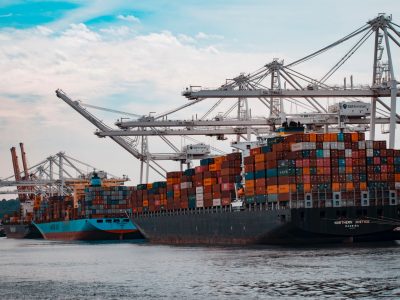Keeping up with tax compliance in 2021 and beyond
New e-invoicing mandates have exposed the inefficiencies of manual invoice processing. By digitising your processes, you can ensure your ongoing tax compliance and avoid crippling fines and fees.

Are you prepared for the changes?
In its January 2021 World Economic Outlook, the International Monetary Fund (IMF) warned that “although recent vaccine approvals have raised hopes of a turnaround in the pandemic later this year, renewed waves and new variants of the virus pose concerns for the outlook.” Due to differences in medical interventions, policy support, exposure to cross-country spillovers, and structural characteristics, “the strength of the recovery is projected to vary significantly across countries.”
Worldwide, the impact of COVID-19 has illustrated significant weaknesses in supply, value, and process chains. In the EU, for instance, the VAT gap rose to €165 billion in 2020, up nearly 14% from the year prior.
More than a year into the crisis, governments are looking for solutions to protect or rebuild their economies, and reclaim the capital issued through emergency stimulus packages. As a result, more than 50 nations have implemented or announced 2,500-plus distinct and diverse measures, including VAT changes, aimed at increasing invoice visibility through digitisation to maximise tax collection and minimise tax evasion.
To complicate tax compliance efforts by multinational organisations, no two state mandates are exactly alike and governments are expecting adherence to a number of different approaches. For accounts payable and accounts receivable departments, this has meant adapting quickly.
Many organisations have responded by expediting their digital transformation — and automating their AP and AR processes; others have incurred increasingly devastating penalties for noncompliance.

Behind the mandates
In 2019, Italy had the largest VAT gap in the European Union and responded by mandating the use of electronic invoicing. From that point forward, suppliers were required to deliver to the government’s tax platform all of their invoices electronically, at which point the tax authority would distribute the invoices to the buyers. This provided immediate visibility of businesses’ tax liabilities, enabling Italy to collect €4 billion more in taxes in its first year.
Other countries witnessed this success, and have been modeling their own programs using technology to increase visibility.
Hungary, for instance, introduced a new version of its e-reporting file in January 2021, affecting all invoices, including cross-border and business-to-consumer invoices. This new file, XSD 3.0, includes optional fields that allow suppliers to also use it as a legal invoice; this seemingly simplified process, however, requires AP departments to work in a new invoice format, without tax and currency codes, further complicating compliance efforts.
France, meanwhile, plans to implement a similar e-invoicing mandate by 2023.
Globally, the trend is toward full automation, beyond e-invoicing, with tax authorities not only mandating the use of specific electronic formats but expanding their sphere of influence to include additional types of transactions and areas of the economy.
These convergences and scope extensions include:
- Merging of e-invoicing and e-reporting, as seen in Hungary and France
- Merging of direct and indirect taxation, as seen in India
- Scope extensions beyond business-to-business transactions to include public procurement, exports, and consumer invoices, as seen in Hungary
- Scope extensions to include foreign entities subject to local legislation, as seen in Poland
- Scope extensions to include other trading documents linked to invoices, as seen in India
From now through 2023, multinational companies can expect more e-invoicing mandates, as well as more detail on what products or services are being invoiced, creating a fiscal landscape much more volatile throughout the next two years than even the previous 18 months.

What you can do to stay compliant
There’s no debating that governments are working overtime to counteract the economic impacts of shutdowns and broken supply chains, and that new e-invoicing mandates have highlighted the pre-existing inefficiencies of manual invoice processing.
By digitising your AP and AR processes, you can ensure your ongoing compliance with changing state mandates — and avoid potentially crippling fines and fees.
Plus, you’ll benefit from end-to-end process visibility, guaranteed invoice delivery, faster payments, improved customer relationships, secure archiving, and access to real-time, line-level analytics.
Interested in learning how our Total AP and Total AR automation solutions can help you maintain compliance and deliver the agility your business needs to reach world-class status?
Want a compliance health check to determine how prepared you are for the changes still to come?




